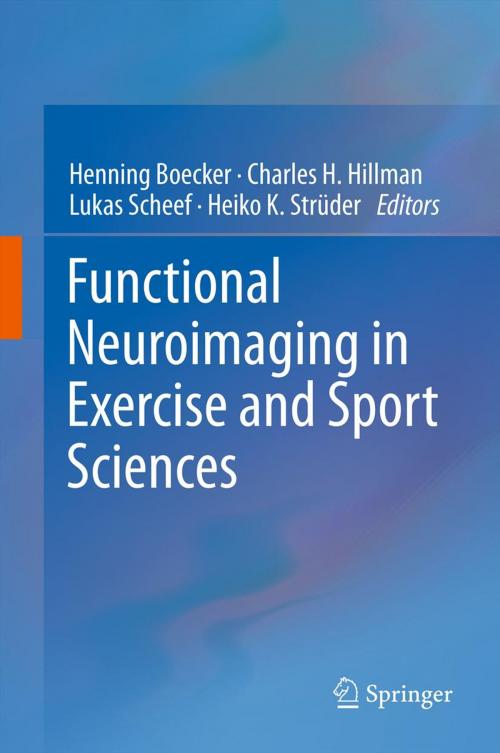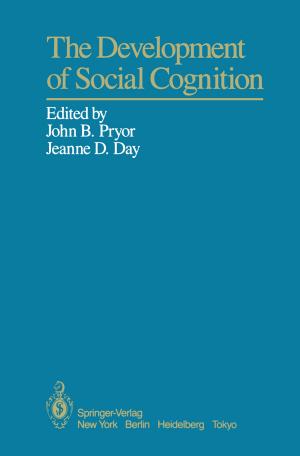Functional Neuroimaging in Exercise and Sport Sciences
Nonfiction, Health & Well Being, Medical, Specialties, Internal Medicine, Neuroscience, Neurology, Science & Nature, Science| Author: | ISBN: | 9781461432937 | |
| Publisher: | Springer New York | Publication: | June 19, 2012 |
| Imprint: | Springer | Language: | English |
| Author: | |
| ISBN: | 9781461432937 |
| Publisher: | Springer New York |
| Publication: | June 19, 2012 |
| Imprint: | Springer |
| Language: | English |
Regular physical exercise is associated with substantial health benefits. Recent evidence not only holds for cardiovascular effects promoting "physical health", but also for the central nervous system believed to promote "brain health”. Moderate physical exercise has been found to improve learning, memory, and attentional processing, with recent research indicating that neuroprotective mechanisms and associated plasticity in brain structure and function also benefit. Physical exercise is also known to induce a range of acute or sustained psychophysiological effects, among these mood elevation, stress reduction, anxiolysis, and hypoalgesia. Today, modern functional neuroimaging techniques afford direct measurement of the acute and chronic relation of physical exercise on the human brain, as well as the correlation of the derived physiological in vivo signals with behavioral outcomes recorded during and after exercise. A wide range of imaging techniques have been applied to human exercise research, ranging from electroencephalography (EEG), magnetoencephalography (MEG), near infrared spectroscopy (NIRS), magnetic resonance imaging (MRI) to positron emission tomography (PET). All of these imaging methods provide distinct information, and they differ considerably in terms of spatial and temporal resolution, availability, cost, and associated risks. However, from a “multimodal imaging” perspective, neuroimaging provides an unprecedented potential to unravel the neurobiology of human exercise, covering a wide spectrum ranging from structural plasticity in gray and white matter, network dynamics, global and regional perfusion, evoked neuronal responses to the quantification of neurotransmitter release. The aim of this book is to provide the current state of the human neuroimaging literature in the emerging field of the neurobiological exercise sciences and to outline future applications and directions of research.
Regular physical exercise is associated with substantial health benefits. Recent evidence not only holds for cardiovascular effects promoting "physical health", but also for the central nervous system believed to promote "brain health”. Moderate physical exercise has been found to improve learning, memory, and attentional processing, with recent research indicating that neuroprotective mechanisms and associated plasticity in brain structure and function also benefit. Physical exercise is also known to induce a range of acute or sustained psychophysiological effects, among these mood elevation, stress reduction, anxiolysis, and hypoalgesia. Today, modern functional neuroimaging techniques afford direct measurement of the acute and chronic relation of physical exercise on the human brain, as well as the correlation of the derived physiological in vivo signals with behavioral outcomes recorded during and after exercise. A wide range of imaging techniques have been applied to human exercise research, ranging from electroencephalography (EEG), magnetoencephalography (MEG), near infrared spectroscopy (NIRS), magnetic resonance imaging (MRI) to positron emission tomography (PET). All of these imaging methods provide distinct information, and they differ considerably in terms of spatial and temporal resolution, availability, cost, and associated risks. However, from a “multimodal imaging” perspective, neuroimaging provides an unprecedented potential to unravel the neurobiology of human exercise, covering a wide spectrum ranging from structural plasticity in gray and white matter, network dynamics, global and regional perfusion, evoked neuronal responses to the quantification of neurotransmitter release. The aim of this book is to provide the current state of the human neuroimaging literature in the emerging field of the neurobiological exercise sciences and to outline future applications and directions of research.















